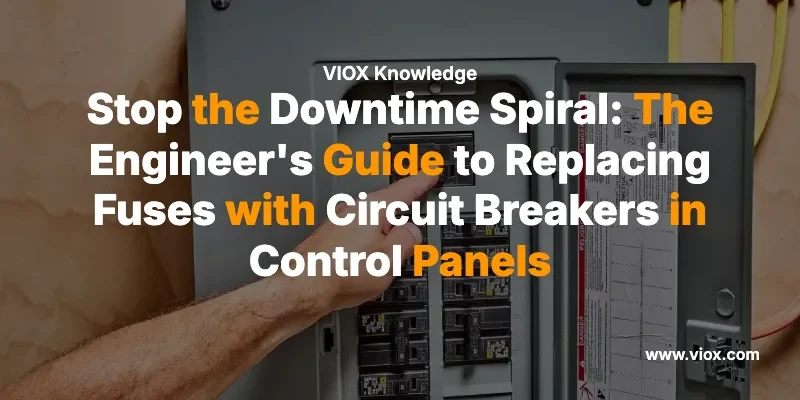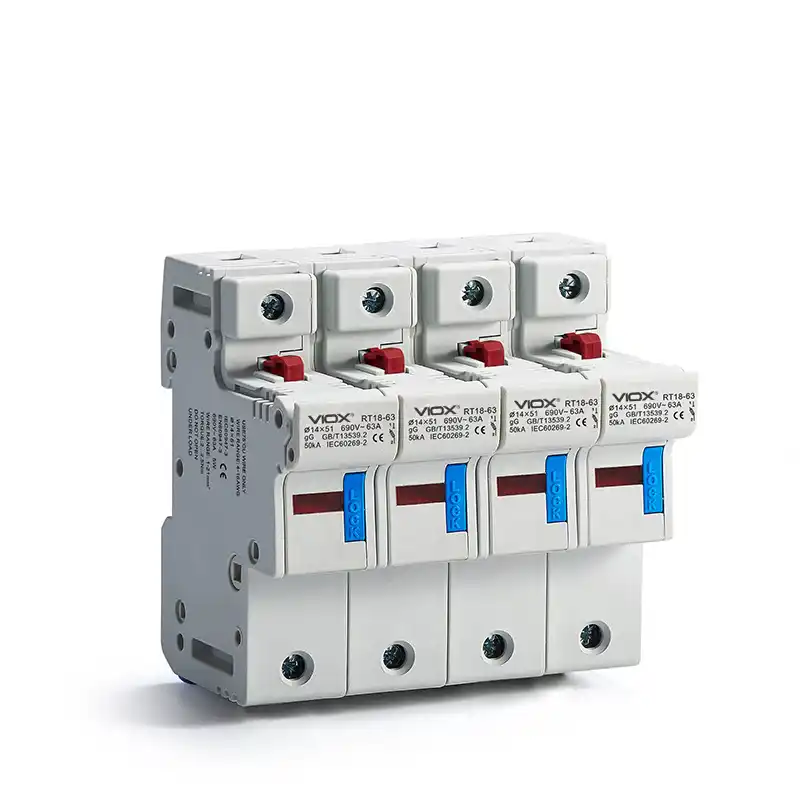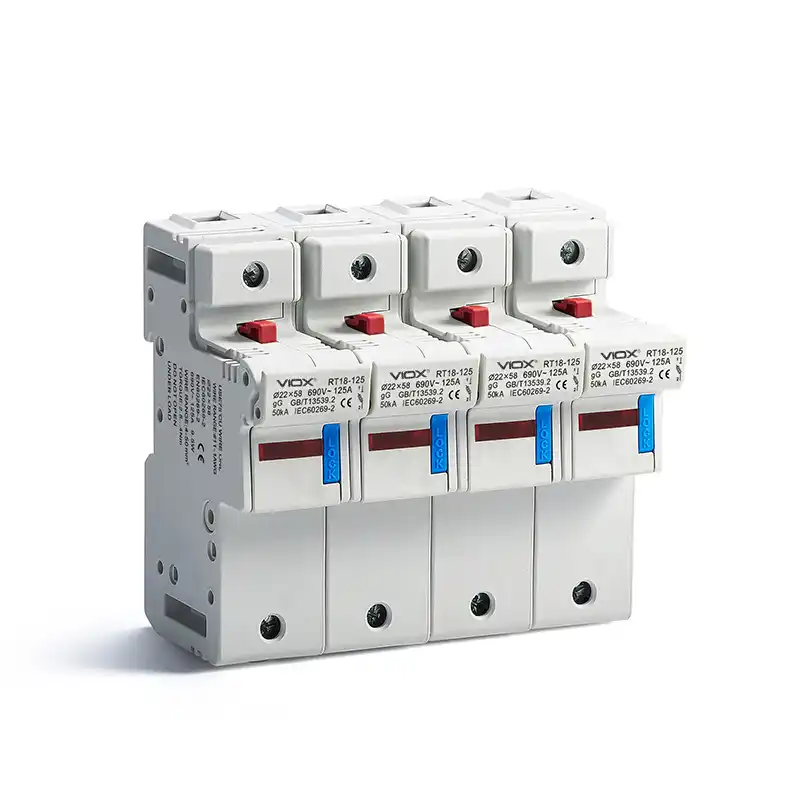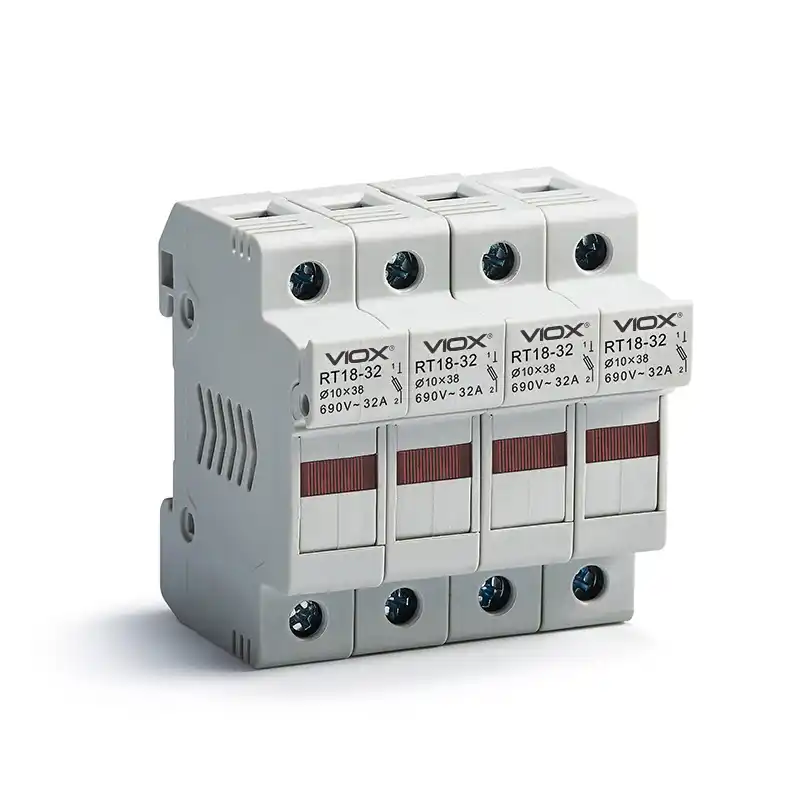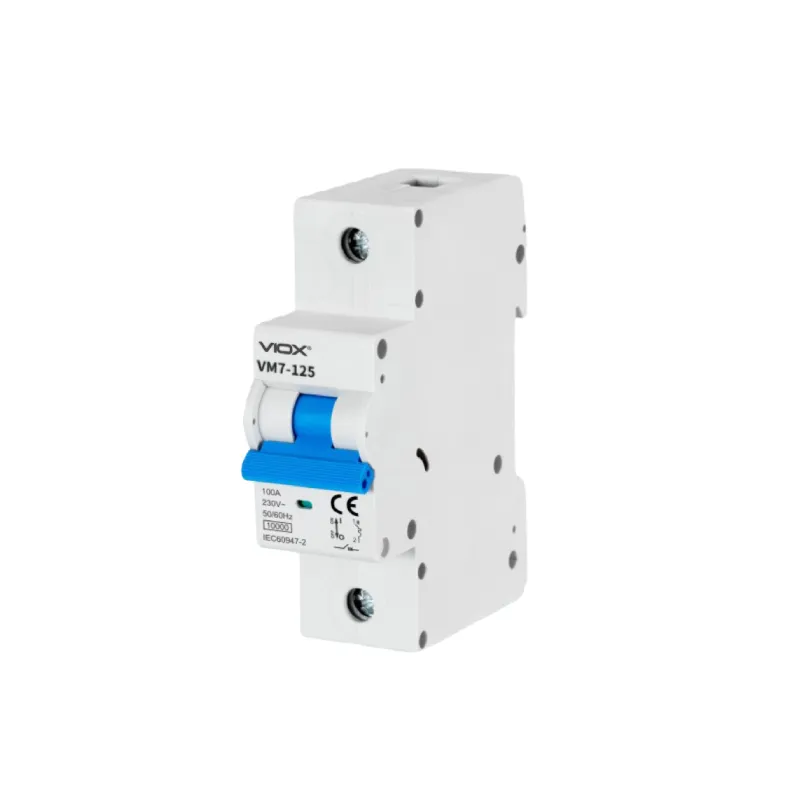The 2 AM Call Every Plant Engineer Dreads
You’ve meticulously designed and maintained your facility’s control panels. Every circuit is documented, every fuse is properly sized for its load, and your preventive maintenance schedule is tight. Then your phone rings at 2 AM. Production Line 3 is down. Again.
You rush to the plant floor, and the diagnosis is familiar: a blown fuse on the motor starter circuit. Now begins the operational nightmare. Your maintenance tech needs to locate a spare 20A Class CC fuse in inventory (hopefully it’s in stock), follow LOTO procedures to safely de-energize the panel, swap out the failed fuse, re-energize, and test. If everything goes smoothly, you’re looking at 45 minutes of downtime minimum. But here’s the real question that should keep you up at night: Why are we still using a protection method that requires a complete shutdown and parts replacement every single time it does its job?
This isn’t a maintenance problem. It’s a technology problem—and it has a solution.
Why Fuses Keep Sabotaging Your Uptime
VIOX-SICHERUNG
To understand why fuses create operational friction, you need to look at how they actually work. A fuse is essentially a controlled weak point in your electrical circuit. Inside that small ceramic or glass body is a thin metal filament—think of it as a deliberately fragile wire. When current exceeds the fuse’s rating, resistive heating melts that filament. The circuit opens, protecting downstream equipment from damage.
The problem? That filament is now gone forever.
Unlike nearly every other component in your control panel, a fuse is designed for one-time use. It’s a “sacrificial” protection device. This made perfect sense when fuses were invented over 100 years ago—they were simple, reliable, and cheap. But in a modern industrial facility where every minute of downtime costs hundreds or thousands of dollars in lost production, this design philosophy is costing you money.
Consider the real cost of a single blown fuse incident:
- Direkte Kosten: Replacement fuse ($5-25), technician labor (0.5-2 hours at $50-100/hr)
- Indirekte Kosten: Lost production during downtime, potential rush fees if spare isn’t in stock, troubleshooting time if wrong fuse is installed
- Hidden costs: Safety risk during replacement, inventory carrying costs for spare fuses of every size
专业提示: Most engineers only calculate the replacement part cost when evaluating fuses vs. breakers. But a single blown fuse incident on a production line can cost $500-$2,000 in total impact when you include labor and lost production. If you’re replacing fuses more than 2-3 times per year on a circuit, circuit breakers will pay for themselves within 12-18 months.
The Circuit Breaker Advantage: Protection Without Sacrifice
Circuit breakers solve the fundamental flaw of fuses by using a completely different protection mechanism. Instead of a sacrificial element, circuit breakers use either bi-metallic strips (thermal protection) or electromagnetic coils (magnetic protection)—often both in combination—to detect overcurrent conditions.
When an overload occurs, the breaker’s internal mechanism trips open, interrupting current flow just like a fuse. But here’s the critical difference: the breaker’s sensing elements and contacts remain intact and functional. To restore power, you simply toggle the breaker’s switch back to the “on” position. No parts to source. No inventory to manage. No extended LOTO procedures.
For control panel applications, you’ll primarily work with two types of UL-listed circuit breakers:
- UL1077 Supplementary Protectors: Lower cost, typically used for control circuits and smaller branch circuits within panels
- UL489 Miniature Circuit Breakers: Higher interrupting rating, used for branch circuit protection and larger loads
Both provide overcurrent protection equivalent to fuses while offering reset capability. Modern breakers also integrate advanced safety features that fuses simply cannot provide, including arc-fault detection, ground-fault protection, and adjustable trip curves for specific applications.
要点总结: The convenience factor alone—reset vs. replace—makes circuit breakers superior for most industrial applications. But the real value is operational: reduced downtime, eliminated inventory headaches, and lower long-term maintenance costs.
The Engineer’s 5-Step Method for Fuse-to-Breaker Migration
Making the switch from fuses to circuit breakers in your control panels isn’t a simple one-for-one swap. Done incorrectly, you’ll end up with nuisance tripping, inadequate protection, or even safety hazards. Follow this systematic approach to ensure success.
Step 1: Audit Your System and Plan the Work
Before you touch a single wire, thoroughly document your existing setup. This isn’t just good practice—in most jurisdictions, it’s legally required.
What to document:
- Current fuse ratings for each circuit (amperage and fuse class)
- Circuit loads (motors, lighting, control circuits, etc.)
- Wire sizes and types for both line and load sides
- Panel layout and available space for DIN rail mounting
- Any motor nameplates with FLA, HP, voltage, and service factor
Critical planning step: Check your local building codes and NEC requirements. Many jurisdictions require permits and inspections (by the Authority Having Jurisdiction, or AHJ) before modifying control panel wiring. Budget time for this in your project schedule.
专业提示: Use a simple numbering or letter system to mark both the line and load wires for each circuit before you start removal. Write these on wire markers or tape. This 2-minute step during documentation will save you hours of troubleshooting if wires get mixed up during installation.
Step 2: Select the Right Circuit Breakers (This Is Where Most Engineers Go Wrong)
Here’s the mistake that creates 90% of post-installation problems: engineers assume they can simply match the fuse amperage to the breaker amperage. A 30A fuse gets replaced with a 30A breaker, right? Wrong.
Fuses and circuit breakers have different time-current characteristics. They respond differently to overloads and short circuits. This is especially critical for motor circuits, where inrush current during startup can be 6-8 times the full-load current.
For motor branch circuits, follow this process:
- Determine motor specifications: Find the motor’s full-load amperage (FLA), horsepower, and supply voltage from the nameplate
- Calculate inrush consideration: Motor starting inrush isn’t continuous, so overload devices must tolerate this temporary surge
- Apply NEC Article 430: Use NEC Table 430.52 to determine the maximum rating for branch short-circuit and ground-fault protection devices
- Select breaker type and trip curve:
- Inverse time breakers (B, C, or D curve) for motor applications
- C-curve breakers handle typical motor loads
- D-curve breakers for high-inrush applications like transformers
Important distinction: The motor overload protection (typically sized at 115-125% of FLA) is separate from the branch circuit overcurrent protection device. The circuit breaker you’re installing provides short-circuit and ground-fault protection—it’s not the same as the overload relay in your motor starter.
Pro-Tip for Motor Circuits: A 30A Class CC fuse protecting a 10 HP, 460V motor might only need a 20A circuit breaker due to different trip characteristics. Always recalculate using NEC Article 430 and motor full-load current tables rather than doing a direct amperage swap. When in doubt, consult the breaker manufacturer’s technical support—they can help you select the proper trip curve and rating.
For non-motor circuits (lighting, control power, resistive loads), sizing is more straightforward. The breaker should be rated for 125% of continuous loads and 100% of non-continuous loads, with wire ampacity as the limiting factor per NEC Article 210.
Step 3: Prepare for Safe Installation
Electrical work in control panels carries significant risk. Before you begin physical work, ensure you have everything in place for a safe, efficient installation.
Required safety procedures:
- Lock-Out/Tag-Out (LOTO): De-energize the control panel at the main disconnect. Lock the disconnect in the “off” position and tag it appropriately
- Verify zero energy: Use a digital voltmeter or non-contact voltage detector to confirm no voltage is present on line-side terminals
- Personal Protective Equipment (PPE): At minimum, wear safety glasses and insulated gloves. Arc-rated clothing may be required depending on your facility’s safety standards
专业提示: Control panels can have “foreign” power sources—incoming power from external sources that bypass the main disconnect. Look for orange or yellow wiring (per NEC standards, these colors indicate alternate power sources). Always verify with a meter, never assume.
Tools and materials checklist:
- DIN rail (35mm is standard) if not already installed in panel
- DIN rail mounting hardware (screws, not thread-cutting screws)
- Appropriate circuit breakers (UL1077 or UL489 as specified)
- Wire markers or labels for circuit identification
- Insulated screwdrivers (Phillips, flat, Torx, square as needed)
- Wire strippers for various gauge sizes
- Digital voltmeter or non-contact voltage detector
- Manufacturer’s installation instructions and torque specifications
- Wire extensions if existing line or load wires are too short
Step 4: Execute the Physical Replacement
With planning complete and safety measures in place, you’re ready for the actual work. Follow this sequence to maintain organization and prevent errors.
Removal of existing fuse blocks:
- Document one final time: Take photos of the fuse block wiring before removal. These serve as reference if questions arise
- Mark circuits clearly: Label both line and load wires with matching circuit identifiers (e.g., “Circuit 1A” on both line and load)
- Note fuse ratings: Write down the fuse size for each circuit—this helps validate your breaker sizing
- Remove fuse blocks: Unmount the fuse blocks from the backpanel, keeping wires organized
Installation of circuit breakers:
- Mount DIN rail: If your panel doesn’t already have DIN rail, install it in an appropriate location. Ensure adequate spacing from other components per NEC clearance requirements
- Snap breakers onto rail: Circuit breakers designed for DIN rail mounting simply snap into place. Verify they’re secure
- Prepare wires: Strip wire insulation to the length specified in the breaker manufacturer’s instructions (typically 10-12mm). If wires are too short for the new breaker locations, extend them with appropriate splice methods or replacement wire
- Connect line-side power: Connect incoming power to the line terminals of the breakers. Follow the manufacturer’s torque specifications exactly—overtightening can damage terminals, undertightening creates resistance and heat
- Connect load-side wiring: Connect the load wires to the load terminals, again following proper torque specs
- Verify ground connections: Ensure all ground wires (bare copper, green, or green with yellow stripe in US installations) are properly terminated
Critical installation note: Always follow the circuit breaker manufacturer’s installation instructions for wire strip length, terminal torque values, and mounting orientation. These vary by manufacturer and model. Using incorrect torque is one of the most common installation mistakes and can lead to overheating, arcing, or connection failure.
Step 5: Test, Verify, and Commission
Never re-energize a panel and assume everything works. Systematic testing prevents equipment damage and dangerous situations.
Pre-energization checks:
- Sichtprüfung: Verify all connections are tight and properly terminated
- Torque verification: Double-check that all terminals are torqued to specification
- Pull test: Gently tug on each wire to verify mechanical connection
- Component position check: Ensure all breakers are in the “off” position before applying power
Energization sequence:
- Remove LOTO devices: Following your facility’s procedures, remove locks and tags from the main disconnect
- Apply power to panel: Close the main disconnect to energize the panel
- Verify control power: Turn on control power circuits and verify proper voltage
- Energize circuits individually: Turn on one circuit breaker at a time, verifying proper operation
- Belastungstests: With each circuit energized, verify that loads operate correctly
- Motor testing: For motor circuits, cycle motors through start-stop sequences to confirm breakers handle inrush properly
专业提示: If a breaker trips immediately upon closing, don’t keep resetting it. This indicates a real problem—either a short circuit in the wiring, an actual overload condition, or an improperly sized breaker. Troubleshoot before attempting multiple resets.
Final commissioning step: Once all circuits are operational, apply load to the system and verify performance under normal operating conditions. Monitor the panel for the first few hours of operation to ensure no temperature buildup at connections or nuisance tripping occurs.
When Circuit Breakers Keep Tripping: Troubleshooting Beyond the Breaker
You’ve completed the installation, but a breaker keeps tripping during operation. Before you assume the breaker is defective or improperly sized, systematically eliminate other causes:
- Check connected equipment: A faulty motor, short circuit in connected wiring, or actual overload condition will trip a properly functioning breaker. Disconnect loads one at a time and test to isolate problematic equipment.
- Verify wire connections: Loose connections create resistance, heat, and voltage drop. This can cause motors to draw excess current. Re-check all terminal torques.
- Evaluate ambient temperature: Circuit breakers are rated for specific ambient temperatures (typically 40°C). If your panel is in a hot environment, thermal protection elements may trip at lower currents. You may need to derate the breaker or improve panel cooling.
- Check for proper breaker selection: If you’re experiencing nuisance trips on motor starting, you may need a breaker with a higher magnetic trip setting (D-curve instead of C-curve) or you may need to upsize per NEC Table 430.52 allowances.
The ROI That Makes Management Say “Yes”
When presenting a fuse-to-breaker upgrade project to management, focus on quantifiable operational benefits rather than just “it’s better technology.”
Sample ROI calculation for a typical control panel with 10 circuits:
Current state (fuses):
- Average blown fuse incidents per year: 6 events across all circuits
- Average downtime per incident: 45 minutes
- Production value lost per hour of downtime: $2,000
- Maintenance labor cost per incident: $100 (technician time)
- Annual replacement fuse costs: $120
Total annual cost of fuses: $10,620
- Lost production: $9,000 (6 incidents × 0.75 hours × $2,000/hr)
- Labor: $1,500 (6 incidents × 2.5 hours × $100)
- Parts: $120
One-time cost of breaker upgrade:
- Circuit breakers (10 units): $500-800
- Labor for installation: $1,500-2,000
- Misc materials (DIN rail, markers, etc.): $200
Total upgrade cost: $2,200-3,000
Payback period: 2.5-3.4 months
要点总结: Most fuse-to-breaker upgrades pay for themselves in under 6 months when you include lost production costs. Even without considering downtime, breakers pay for themselves in 2-3 years through eliminated labor and replacement costs alone.
Making the Transition: Your Action Plan
Upgrading from fuses to circuit breakers in your control panels delivers measurable operational improvements: reduced downtime, lower maintenance costs, improved safety, and simplified troubleshooting. The technology is mature, proven, and supported by comprehensive standards.
Before you begin:
- Audit your current panels and document fuse ratings and circuit loads
- Calculate your facility-specific ROI using actual downtime and labor costs
- Review NEC Article 430 (for motor circuits) and Article 210 (for general branch circuits)
- Check local code requirements for permits and inspection
During implementation:
- Never assume fuse-to-breaker amperage ratings translate 1:1
- Use NEC tables and motor full-load current data to size properly
- Mark all wires before removal and follow systematic installation procedures
- Torque all connections to manufacturer specifications
- Test thoroughly before returning to production
For complex installations or if you lack in-house expertise, hire a licensed electrical engineer or qualified electrician. The cost of professional installation is far less than the cost of fixing mistakes—or worse, dealing with an electrical incident.
The question isn’t whether circuit breakers are better than fuses for industrial control panels. They are, by every operational metric. The real question is: how much is outdated fuse technology costing your facility right now?
Referenz: For additional guidance on breaker selection, see technical resources on UL1077 vs. UL489 breaker specifications and NEC Article 430 for motor circuit protection requirements.

